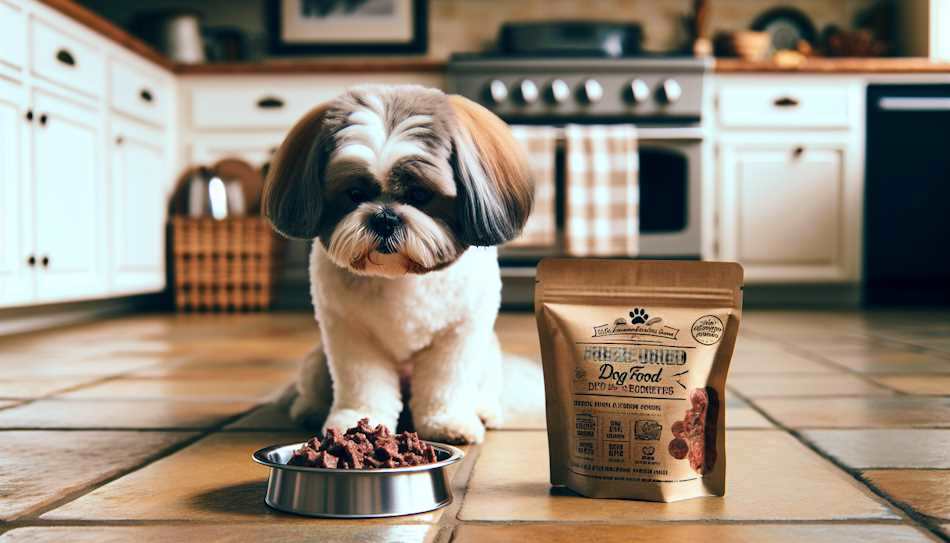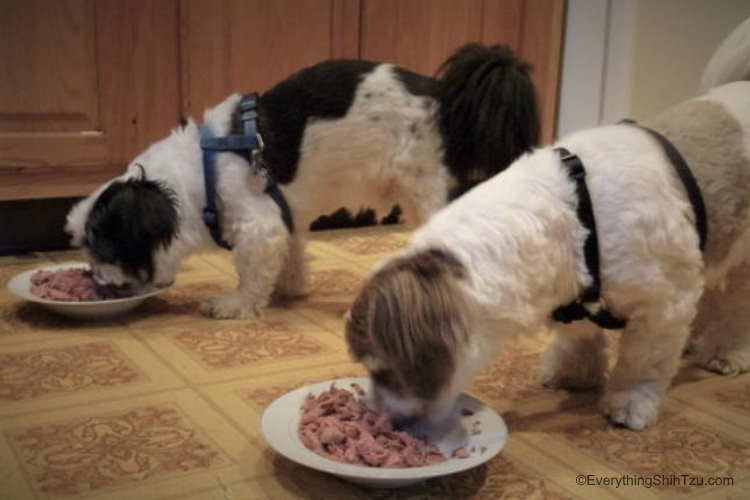Dry Dog Food vs Wet Dog Food: Which Is Better For Your Shih Tzu?
BY MOLLY | EVERYTHINGSHIHTZU.COM
As a dog guardian, you know that your furry little friend loves to eat! One of the challenges of having a dog is deciding which type of food is best for them.
The two main choices dog owners have to choose between are dry dog food and wet dog food.
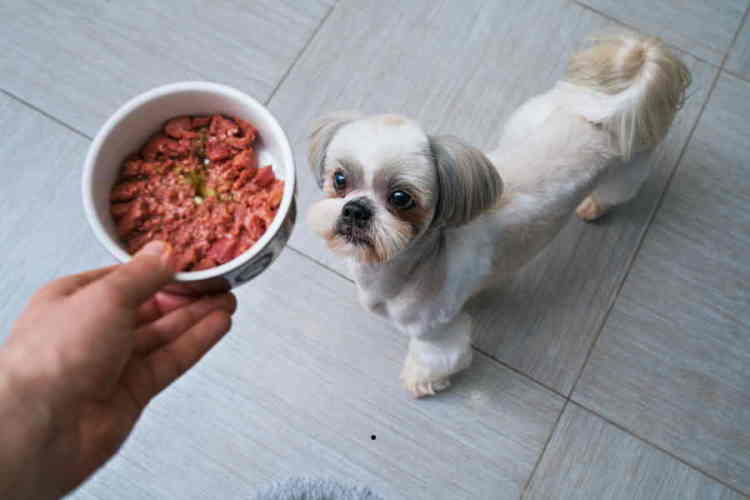
Many dogs are not picky eaters (though some are), so they will likely be content with either choice.
However, you have many factors, such as budget, health benefits, and cleanliness, to consider when choosing the right option for your dog.
Both food options have benefits and drawbacks, so there is no overall proper choice. The best choice will depend on your dog and your preferences.
Feeding your dog dry dog food
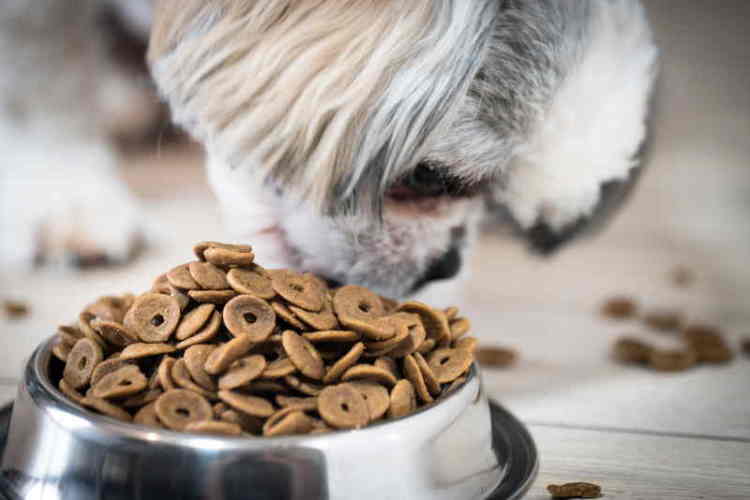
Dry dog food is the go-to choice for many dog owners. It is the more economical choice of the two dog foods, meaning you can buy a more significant amount of food for your money.
However, there are more advantages to dry dog food than its budget:
- You can leave dry dog food in the open for a long time. It doesn’t spoil quickly, so if your dog likes to pick at his food throughout the day instead of eating it all at once, his food should still be good after sitting out for a day.
- It helps clean your dog’s teeth. Many dry dog foods feature ingredients that assist with cleaning and shaping your dog’s teeth.
- It promotes healthy jaws, especially in puppies who are still developing. Chewing hard foods helps strengthen the jaw. Adversely, this may be difficult for older dogs or dogs with weaker jaws.
- It is easy to measure. If your dog needs to eat a specific portion of food every day, it is easy to measure out the correct portion with dry dog food.
Dry dog food is easy to store too. You can keep it in its bag if you roll up and seal the bag, or you can store it in a container with a lid secure enough to keep out insects.
Dry dog food does have its drawbacks. As the name implies, dry dog food is dry!
There is not much moisture in this food, so if your dog’s diet is primarily dry dog food, he needs to drink plenty of water.
Furthermore, not having much moisture in the food is challenging for older dogs or dogs who live in hot and dry climates.
Some dry dog foods also tend to be higher in carbs and may not have an optimal amount of protein.
Certain breeds of dogs on a diet should not eat too many carbs, so dry dog food may not be the best option in these cases.
For an interesting study on dry dog food, check out this evaluation by NCBI on commercial dog food diets.
Feeding your dog wet dog food
Wet dog food is the more savory of the options. Wet dog foods contain more moisture, so if your dog lives in a dry and hot climate, it is an excellent option for additional hydration!
Furthermore, the advantages of wet dog food include:
- It has a powerful scent. Some dogs, especially older ones, have a limited sense of smell, so they are more inclined to eat food that is full of scents they love.
- It is soft. Dogs with missing teeth, weaker jaws, and smaller mouths may have difficulty eating dry dog food, whereas wet dog food is easy for them to chew.
- Its nutrients and minerals are more balanced than dry dog foods. Most wet dog foods do not tend to be as carb-heavy as dry dog food which is good for dogs on a diet or for breeds that are not supposed to eat too many carbs.
One of the main drawbacks of wet dog foods is the shelf-life.
Once a container of wet dog food is open, it cannot remain exposed for too long. If your dog cannot finish their food, you must put the leftovers in a container and refrigerate them to prevent spoiling.
Additionally, wet dog food can be messier. Dogs tend to get it caught in their whiskers and fur and stuck on their noses.
Wet dog food is also more expensive than dry dog food, and it does not feature the dental benefits associated with dry dog food.
Mixing dry and wet dog food
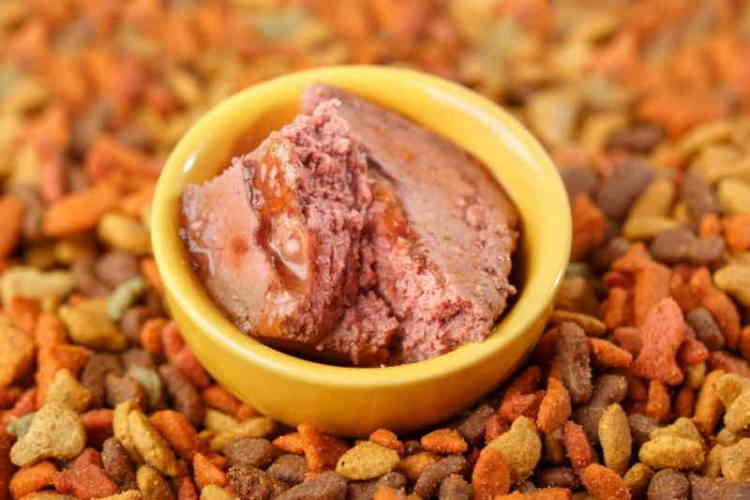
Another option you have is to mix dry and wet food together.
There are different strategies for this method. Some owners measure a portion of dry dog food with a little wet food every day to give their dogs the benefits of both.
Other dog guardians choose to feed their dog wet food most days of the week and dry food for one or two days, or vice versa, which is what we do with our dogs.
Our pups love their wet meals, and we love the nutrients and hydration they get from their food.
We feed them dry food, though, since it helps their dental hygiene.
It’s also nice to let them have dry food now and then, so we don’t always get food-soaked noses in our faces!
Tips for switching from wet food to dry or vice versa
Usually, for health or economic reasons, owners choose to switch their dog’s primary diet from wet dog food to dry dog food or vice versa.
Switching food may be a challenge, though, if your dog has spent most of his life with wet food.
In these cases, your dog may be more reluctant to eat dry food. You can help ease them into their new diet by mixing three parts of the wet food into one part dry food.
The exact amount depends on the recommended portion size for your breed. For example, fully grown Shih Tzus usually eat three-fourths of a cup to a full cup of food each day.
Once your dog has accepted this new meal, you can slowly begin shifting the ratio over the next couple of weeks until it is heavier on the dry food side.
Eventually, you can remove wet food from the mixture completely, and your dog should be okay with his new diet.
final thoughts on Dry dog food vs Wet dog food
Every dog food should contain the base amount of nutrients that your dog needs to survive, but some options are more healthy or nutrient-rich for specific breeds.
Whether wet or dry, you should choose the foods that will best meet your dog’s nutritional needs.
If you have any questions about which food is best for your dog’s nutritional needs, you should talk to your veterinarian.
Your vet will consider factors like your dog’s breed, age, weight, health, and activity levels for determining which food will get your dog the most nutrients he needs to live a happy and healthy life.
Happy eating!
- Home
- Shih Tzu diet
- dry vs wet dog food
Posted 3/18/21
